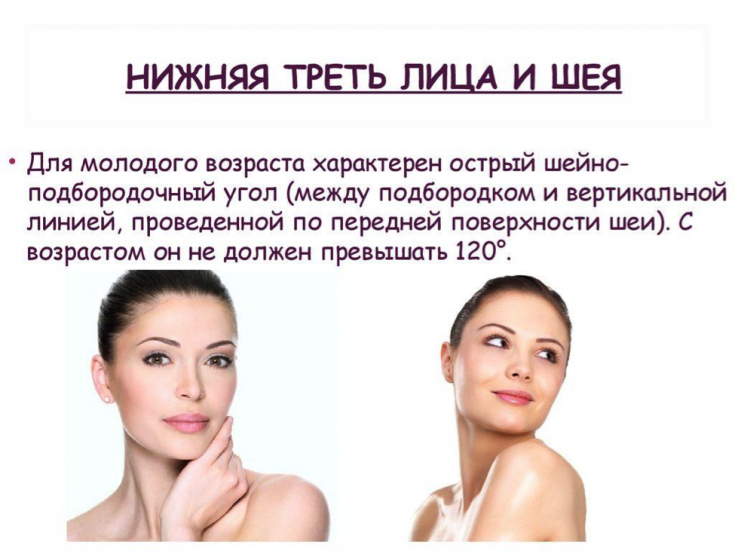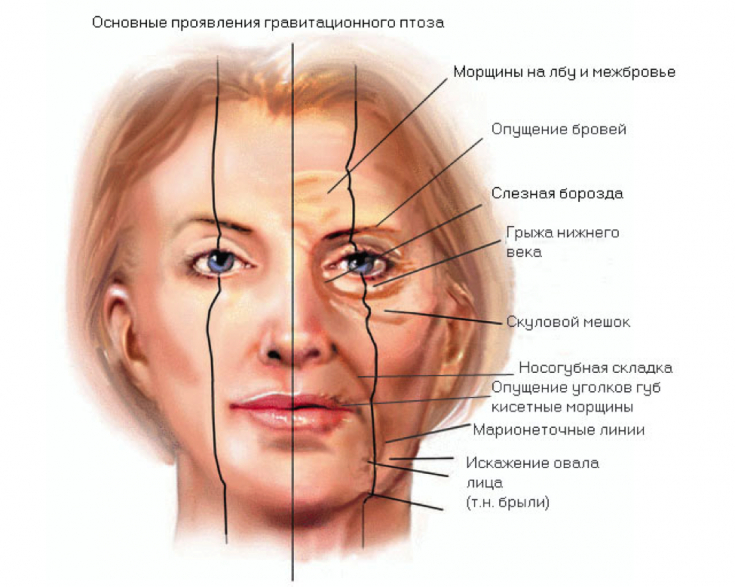Due to the fact that the modern standard of living requires a high-quality appearance from society and the elimination of skin aging processes, plastic surgery is developing rapidly. Correction of cosmetic changes in the tissues of the head and neck, which are associated with congenital and age-related aspects, is currently represented by the most common surgical interventions, in particular, otoplasty and rhytidectomy or circular facelift.
Read more about this operation atestet-portal.com
- technical issues of a circular facelift
- assessment of age changes before circumferential facelift
- method of carrying out circular facelift
Technical aspects of a circular facelift
Today, in the field of plastic surgery, there are practically no data on the depth and boundaries of detachment of skin-fat flaps during a facelift, there are no studies that would allow us to provide digital parameters used at the stages of planning surgical interventions (angles at which tissue tightening takes place and the amount of excess skin to be excised).
Follow us on Instagram!
The fibroarchitectonics of the skin of the nipple area at various stages of its deformation is practically not studied, and most manipulations are carried out in this zone.
Assessment of age-related changes before a circular facelift
The process of involutional changes in the lower third of the face is complex and varied, covering a wide range of transformations of various tissues and interrelated formations, without taking into account which pathogenetically substantiated, effective surgical correction is not possible.
Read also: Ptosis of the upper eyelid: diagnosis and treatment
Studying the clinical and functional features of skin aging is important from the point of view of an expert assessment of the diagnostic and treatment process both for practicing doctors and for scientific research.
In addition, there are debatable and insufficiently studied issues related to premature aging of the skin of the lower third of the face and its surgical correction, since this type of aging requires interdisciplinary cooperation in the correction of age-related changes .
Method of performing a circular facelift
When performing surgery according to the generally accepted method of circular facelift, the incision begins along the behind-the-ear groove in the projection of the posterior surface of the upper segment of the earlobe, continues along it upwards by 3.2-4 cm, and at an angle of 80 -92° extends by 3.5-5 cm within the hairy part of the mastoid region. After deepening the incision to visualize the superficial fascia, the edges of the future skin-fat flap are taken with 5 sutures that hold the beginning and end of the incision.

With the help of scissors, a blunt detachment of the skin-fat flap is performed within the anterolateral and anterior surface of the neck to a conventionally marked midline drawn from the middle of the submental region to the projection of the cartilaginous epiglottis. At the end of this stage of the intervention, a thorough microplatelet and, if necessary, coagulation hemostasis was performed.
Follow us on Facebook!
After detachment of the skin-fat flap within the above limits, it was empirically stretched under the control of tactile sensitivity, followed by overlapping on the donor site to the other edge of the surgical wound. After a pause of 20-30 seconds in order to partially relax it, a line is drawn on the tissues in the projection of the other edge of the wound in order to determine the width of the excess skin that belongs to the excision.
Read also: What determines the cost of breast plastic surgery
In the mastoid region, the incision passes at a distance of 3-6 mm from the behind-the-ear crease to the level of the external auditory canal of the auricle, at a depth of 0.9-1.1 mm, where smoothly at an angle of 40-60 ° is displaced to the lateral surface of the neck in order to maximize the cosmetic effect in the postoperative period. Such a course of the incision line allows forming a thin scar on the back surface of the auricle, which is invisible during external examination. Further, the incision is continued down 5-6 cm along the hairline or retreating from the scalp by 3-5 mm at a depth of 1.2-1.4 mm.

After the incision was made, the flap was detached at the above thickness. In order to avoid bleeding and hematomas in the postoperative period, at the next stage the width of the skin-fat flap was determined, which must be eliminated. For this, a mathematical model is used, which causes the flap to be lifted under certain vectors and angles of inclination. Tension occurs at 4 points. It has been established that at the first point of application, the skin must be stretched at angles of 12.8 ° -14.2 °, in the second 8.8 ° -10.2 °, in the third 4.8 ° -5.9° and in the fourth 6.2 ° -7.0.
Read also: The perfect seam: the main characteristics of different types of suture materials
At the next stage, the excess flap was excised along the predetermined lines in order to minimize skin tension on both sides of the future scar in order to optimally improve the contour of the face oval and eliminate involutional ptosis of the skin of the anterior and anterolateral surface of the neck. Then the postoperative wound was sutured. This technique is the most optimal for performing a circular facelift, which provides surgical interventions while maintaining the natural topographic and anatomical ratios of tissues.
Based on research by Doctor of Medical Sciences, Avetikov D.S.
More useful information on our YouTube-channel:







Add a comment